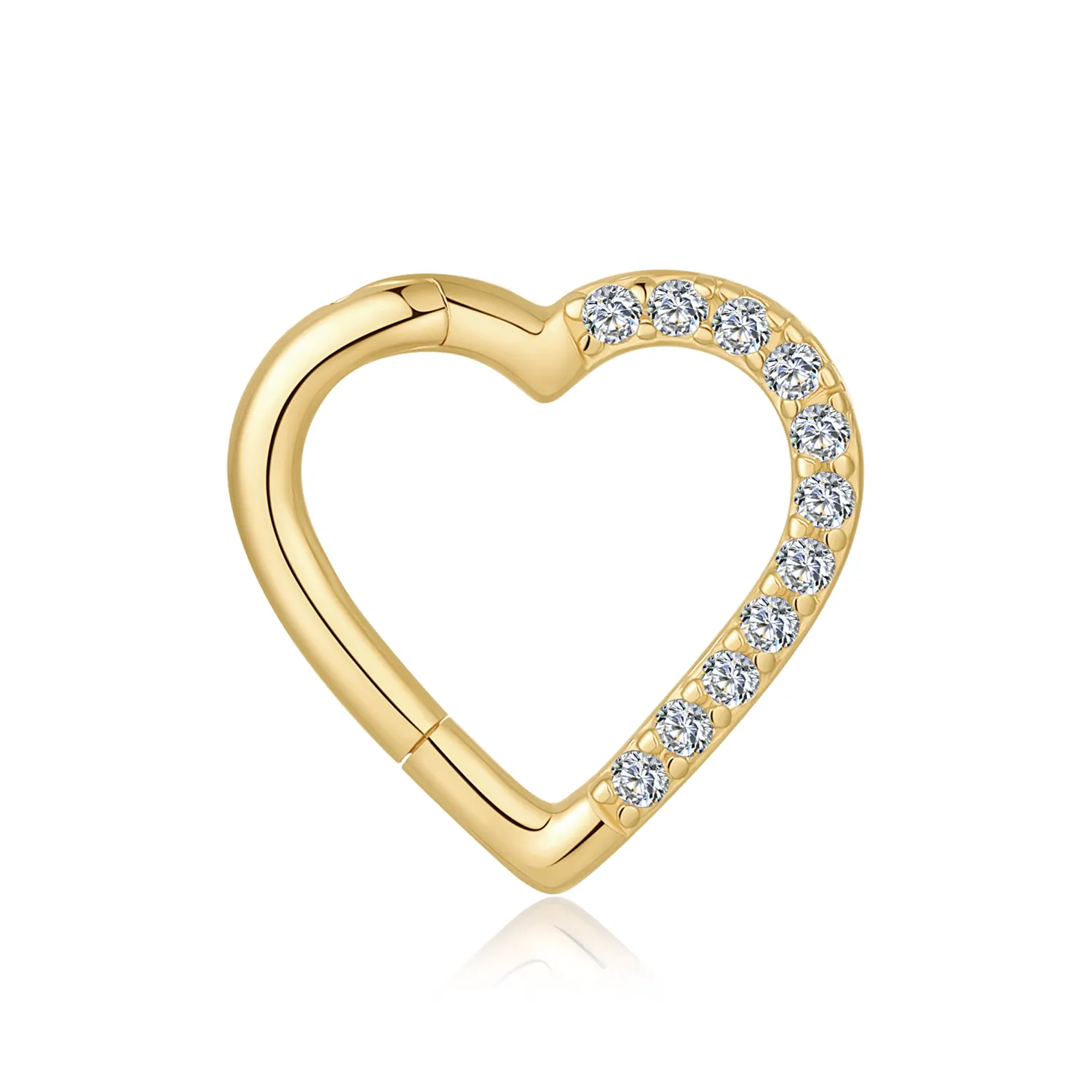Correo electrónico:wholesale@goldpiercingfactory.com WhatsApp:+14086905740


From subtle nostril gems to striking bridge jewelry, nose adornments provide countless opportunities for self-expression. This complete overview examines all major nose piercing varieties – covering positioning factors, recovery periods, accessory suggestions, and current fashions – to assist you in making a well-informed decision. Whether you’re attracted to traditional septum rings or innovative rhino piercings, learn how to pick the ideal design for your facial structure and daily life. Gpf offers a wide variety of nose studs.
Investigate the varied realm of nose piercings, from conventional nostril designs to cutting-edge rhino placements, and see how each distinctive position can improve your look.
Introduction to Popular Nose Piercing Types
Piercing de la fosa nasal
Nostril piercings rank among the most timeless and adaptable choices. Located on the nostril’s curve, this piercing works with diverse jewelry styles, such as studs, rings, and nose bones. Studs feature slender posts with decorative ends, while rings form complete circles that can adorn either the nostril or septum. This option flatters nearly all face shapes and delivers a refined yet personalized appearance.
Septum piercings pass through the nasal partition cartilage. Favored for their daring vibe, they accommodate multiple jewelry styles including seamless rings and horseshoe-shaped pieces. These circular designs create a striking but flexible look. This piercing enables wearers to try both understated and eye-catching accessories.
Situated higher on the nose than standard nostril piercings, high placements offer a discreet but noticeable effect. Their elevated position typically suits petite jewelry like studs or flat-backed labrets, adding a sophisticated accent to facial features.
Bridge piercings run horizontally across the nose’s upper portion between the eyes. This prominent placement suits those desiring an unconventional style. Straight barbells constitute the primary jewelry choice, delivering a dramatic visual impact.
Specialized and Complex Nose Piercing Variations
Nasallang piercings create a continuous channel through both nostrils and the septum. This sophisticated technique demands skilled execution due to its intricate structure. The unified alignment presents an exceptional option for individuals wanting truly unique body art.
Rhino piercings vertically penetrate the nose’s tip. This advanced style emphasizes balanced proportions and delivers a fashion-forward look. Specially curved barbells naturally follow the nose’s shape for optimal comfort and style.
Selecting Your Optimal Piercing Location
Facial Structure and Balance
Your bone structure greatly affects which piercing will enhance your appearance. Central septum piercings often suit symmetrical faces best. High nostril piercings can highlight cheek definition, whereas bridge piercings focus attention on the eye area.
Personal preference significantly influences piercing selection. Minimalists may prefer a single nostril stud, while those favoring dramatic looks might opt for nasallang or bridge piercings that command attention.
Cultural traditions and professional environments may impact placement decisions. Nostril piercings enjoy broad acceptance globally and in workplaces due to their subtle nature. More noticeable options like bridge or rhino piercings may need careful consideration based on social norms or job requirements.
Healing times differ by piercing type: nostril piercings typically heal in 2-3 months, whereas complex styles like nasallang may require extended recovery due to multiple entry points. Consistent cleaning with saline solutions remains vital for all piercing types.
Tools for Determining Perfect Placement
Facial Analysis for Precise Positioning
Facial mapping evaluates individual features to identify the most flattering piercing locations. This method guarantees symmetry and accentuates natural facial lines by coordinating jewelry placement with key structural points.
Expert consultation proves invaluable when choosing placement. Specialists evaluate skin texture, cartilage firmness, and anatomical compatibility to suggest positions that reduce risks while maximizing aesthetic benefits.
Piercing artists employ specialized implements like surgical pens to mark exact positions beforehand. Specialized clamps provide stability during insertion, particularly for complex placements like nasallang or rhino piercings.
For premium jewelry selections after piercing, consider this 14K Solid Gold Heart-Shaped Hinged Segment adorned with cubic zirconia stones for enduring sophistication.

Why Jewelry Quality Matters for Nose Piercings
Recommended Materials for New Piercings
Jewelry composition critically impacts comfort and safety during initial healing. Premium materials reduce allergy risks and accelerate recovery. Top choices include titanium, medical-grade stainless steel, and 14K solid gold – all hypoallergenic and long-lasting options ideal for fresh piercings.
Oro macizo de 14 quilates combines luxurious appeal with skin-friendly properties, ensuring comfortable healing. This proves especially important since inferior materials may cause irritation or infections.
Ideal Jewelry for Specific Piercing Types
Delicate Studs for Nostril Piercings
Though nostril piercings accept various jewelry forms, lightweight studs remain popular for their refined practicality. Featuring slender posts with decorative ends, they provide a timeless look perfect for everyday wear while minimizing stress on healing tissue.
Septum piercings benefit from sturdy yet fashionable choices like captive bead rings. These offer design versatility while maintaining secure positioning. Their circular form harmonizes with the nose’s center for both visual appeal and functional comfort.
Bridge and rhino piercings work best with anatomically shaped barbells. These follow the nose’s natural curves for enhanced comfort and visual balance, making them perfect for bold, contemporary piercing styles.
Preventing Frequent Piercing Placement Errors
Avoiding Alignment Problems
Crooked placements can detract from overall appearance. Precise marking and professional technique prevent this issue. Experts use surgical pens to designate exact spots before piercing, ensuring proper alignment with facial features.
Daily activities should influence placement decisions. Sports participants or those wearing protective equipment may find certain positions impractical. Professional advice helps navigate these considerations to prevent post-piercing issues.
Ill-fitting jewelry impedes healing and causes discomfort. Correct sizing ensures comfortable wear without excessive pressure. Professionals take precise measurements to recommend sizes that support optimal recovery.
Current Developments in Nose Piercing Styles
Modern piercing enthusiasts increasingly favor mismatched arrangements for distinctive looks. This involves combining different piercing types on opposing facial sides – like pairing a nostril stud with a septum ring – for an artistic, unconventional effect.
Clustered piercings create intricate, coordinated designs. This trend encourages mixing various jewelry styles – studs, hoops, rings – to develop personalized arrangements that showcase individual taste.
Q1: Is getting several nose piercings simultaneously advisable?
A: Possible, but consult your piercer about enhanced aftercare needs since multiple piercings require more healing attention.
Q2: What’s the proper cleaning method for new piercings?
A: Gently cleanse the area twice daily using saline solution to prevent irritation.
Q3: Which materials should new piercings avoid?
A: Steer clear of inferior metals like nickel or silver that may trigger allergies or discoloration.